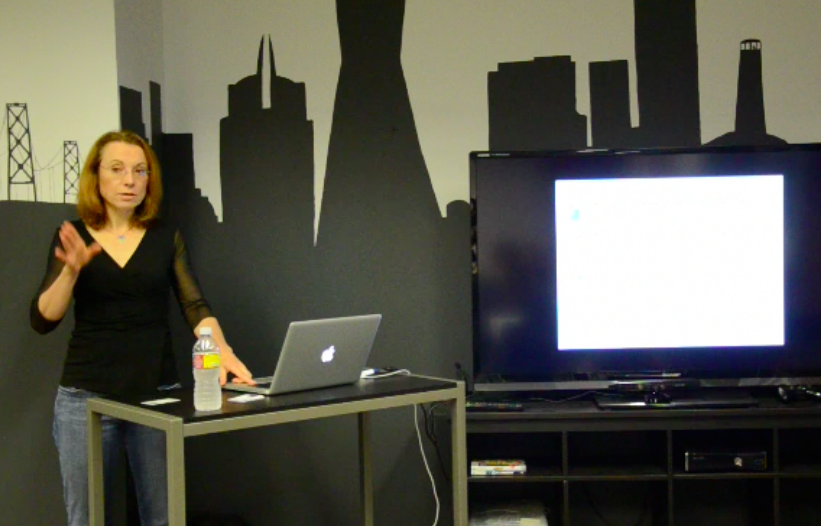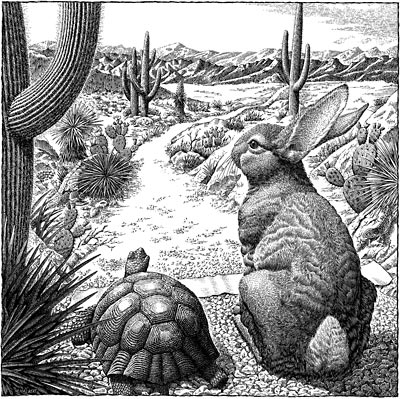Grant Writing for Amateurs
Free money does not come easy but Uncle Sam does give it out for the right project, a polished application, and a large dose of patience. Grants are the lifeblood of research at universities but they can also help out small businesses.
Rock Health startups got the low down on how to get the non-dilutive funding from Shauna Farr-Jones, a professional grant writer for UCSF who has secured over $125 million in grant money. She mapped out the fine details of tedious registration, stacks of forms, tough competition, and a long 9-month wait for the money. Under 20% of applications win grants — so it’s worth paying attention to the details.
Pick a Route
There are a range of institutions that give out grants with very different requirements. Grant requirements vary and finding the right one can be as difficult as writing it. The good news: once you have the forms done for a government grant, you can apply to a few others fairly quickly. The bad news: the websites are dense with information and not user friendly.
The Granters
Here is a short list of some of the governmental and private organizations that provide grants. Help us add to our list.
- California HealthCare Foundation
- Department of Defense
- Eli Lilly Foundation
- Environmental Protection Agency
- Ford Foundation
- Gates Foundation
- National Science Foundation
- National Institute of Science
- Rock Health
Small Business Innovation Research Grants
This is a small portion of a daunting list of available grants. A great set to begin looking for startups are the Small Business Innovation Research (SBIR) grants which are allotted to for-profit companies. Begin by looking at the requirements to see if your company qualifies to apply. Requirements include: 51% of the company must be US owned and independently operated, located in the US, and have 500 of fewer employees. In addition, the principal investigator (PI), lead engineer or scientist heading the project, needs to put in 51% of their effort or employment into project. Other funding should be under $150,000 and the innovation research project should last 6-12 months long.
There are 2 phases to these grants. Phase 1 has a 5-10% acceptance rate and includes $150,000 for 6 months – 1 year to cover direct and indirect costs. Once you are approved for phase 1 you have a 50% chance of getting a phase 2 grant. Phase 2 grants can last for 2 years and can be worth up to $1,000,000.
Within the SBIRs there are two main categories: broad topics or specific problems. An example of a board topic is the NSF Program solicitation 11-577 which gives approval to broad topics of:
- Biological and Chemical Technologies (BC)
- Education Applications (EA)
- Electronics, Information and Communication Technologie
- (EI)Nanotechnology, Advanced Materials, and Manufacturing (NM)
The next deadline is 11-577 is December 2.
Then there is omnibus category of grants that is made up of very specific topic grants. Check out these grants that involve health technology.
Digital Health Innovation Grants
- Computing and Communication Foundations: Core Programs(NSF 11-557) Due November 1, 2011
- Sensors-Communications, Circuits, and Sensing-Systems (PD 11-7564) Due February 7, 2011
- Translational Research on Aging (RFA-AG-12-009)Due November 4, 2011
- Development and Translation of Medical Technology to Reduce Health Disparities (RFA-EB-11-001)Due January 7, 2012
- Develop New Methods and Technologies able to Identify Individuals at Risk of Developing Type 1 Diabetes (RFA-DK-11-024)Due December 22, 2011
- Translational Research for the Prevention and Control of Diabetes and Obesity (PAR-09-176) Due March 1, 2012
- Virtual Reality Technologies for Research and Education in Obesity and Diabets (RFA-HL-12-024) Due July 11, 2011
- Exploratory Innovations in Biomedical computations in Science and Technology (PAR-09-219) Due August 17, 2009
- mHealth Tools to Promote Effective Patient–Provider Communication, Adherence to Treatment and Self Management of Chronic Diseases In Underserved Populations (PA-11-332) Standard Dates apply
- Exploratory and Developmental Grant to Improve Health Care Quality through Health Information Technology (PAR-08-269) Standard Dates apply
You can continue to search the SRIBs for relavant opportunities to your particular project in the SBIR data base or grant search site.
It may seem that the decisions are made behind the curtain by the mysterious OZ character, but it’s possible to get in touch with NIH personnel. (Here is a list for 2011 personnel for each SBRI category with their names, emails, and even their phone numbers.)
Ready, set, write
After finding the right solicitation, begin the long process of writing and rewriting. The slow, steady, and careful tortoise wins the grant race as the process involves stamina and attention to detail. Here are the steps to writing a good grant application
1) Get registered– allow 3 weeks
2) Delegate tasks to team members: Technical proposal (someone who can articulate all the gritty details) and business proposal (good understanding of costs and budgeting)
3) Download forms (SF-424) and instructions
4) Begin to write
5) Iterate
6) Repeat 4 and 5 until you are fully confident. Allow for 8 weeks to do this to ensure you are in the top 10% of applicants.
Final Product:
Wondering what your final product should consist of at the end of all the work? Here is the basic outline of a NIH grant application.
Specific Aim (1 page)
- 1 paragraph with goal, significance, background theory, hypothesis
- Aims- Include a short title for each aim with brief rational (1 sentence), brief design (1-3 sentences), and quantitative milestones to measure progress
Significance
- Give context of the problem you are tackling and the relevance. For example, if you are working on a diabetes prevention illustrate the population at risk, costs involved,and potential savings.
Innovation
- This is where you want to give all the details of the innovation. Have some who can articulate it well. Also, indicate any pending patents and protect your secret sauce if you do not have one pending.
- Details and creditability are key to getting the approval committee’s attention. In order to do this, exhibit of any preliminary data, establish technical creditability, and cite any publications.
Approach
- For each aim expand and elaborate on: rational, methods, data analysis and interpretations, alternatives, and milestones to mark progress.
Other things to include
- Biosketches for principal investigator and all key personal
- Budget that includes direct (ex. materials, consultants, salaries) and indirect costs (Fringe benefits, rent, overhead, etc) with justifications for each
- Cover letter
- Facilities description
- Contractual arrangements if applicable
- Data sharing statement if you are planning to open source data or publish a paper after (highly recommended)
Once you finally submit your application on time, cross your fingers and be patient. Grants are allocated within 9 months of the submission process if the application is approved. This might not be the best news for entrepreneurs who want to grow quickly, but then again it is free money.



